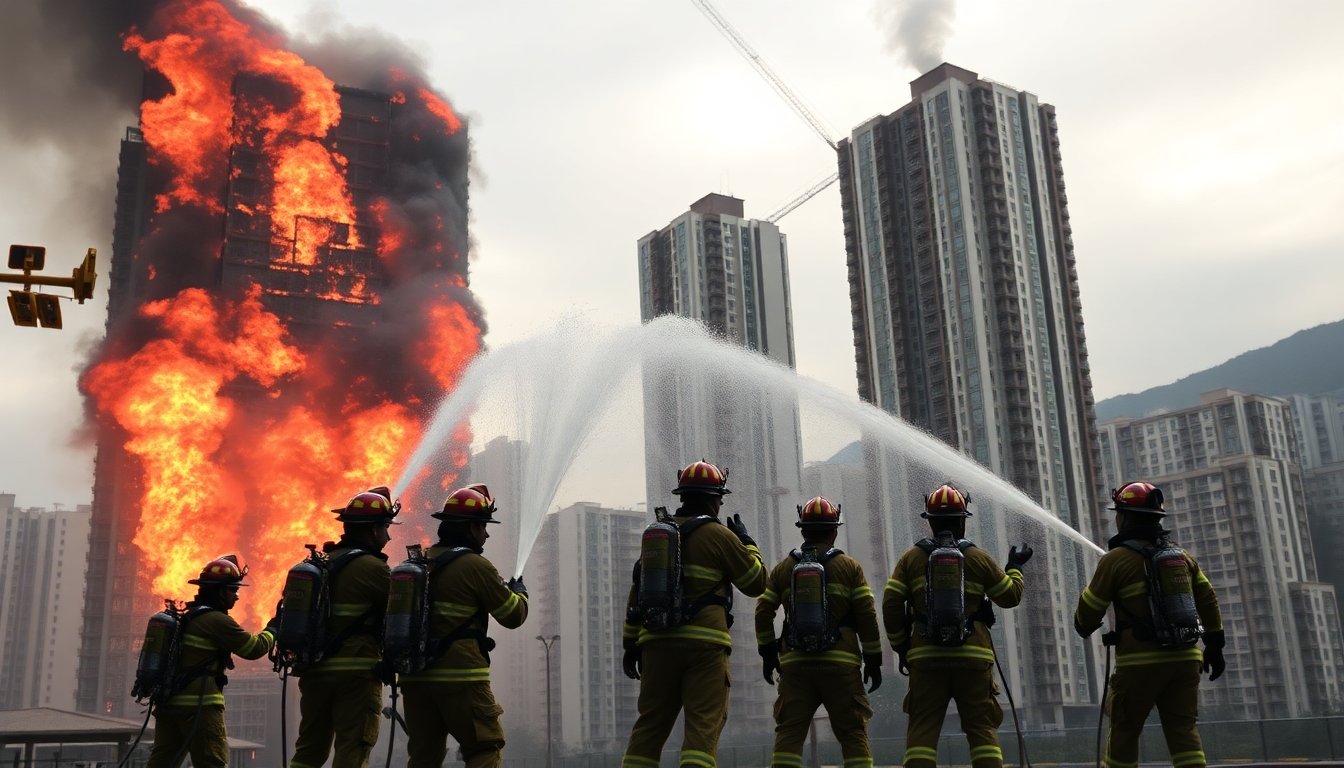Table of Contents
The skyline of Hong Kong was marred by a catastrophic fire in a high-rise apartment building, resulting in tragic fatalities. Over two days, firefighters battled the flames at the Wang Fuk Court complex in the Tai Po district. This incident has claimed the lives of at least 83 individuals and marks one of the most devastating fires in the city’s recent history.
Firefighters responded swiftly, but the blaze spread rapidly due to unfavorable conditions and potentially substandard materials. The fire reportedly began with bamboo scaffolding and construction netting, quickly affecting seven out of eight buildings in the complex, home to thousands of residents.
Ongoing search and rescue efforts
As rescuers sifted through the charred remains of the complex, the grim reality emerged. Authorities indicated that contact was lost with 279 people during the fire. Officials acknowledged the uncertainty surrounding how many individuals remained trapped inside the buildings during a press briefing.
Rescue operations faced significant challenges, including high temperatures and thick smoke that filled corridors and stairwells, rendering escape nearly impossible for many residents. One resident, Lawrence Lee, described a heart-wrenching conversation with his wife, urging her to flee. Unfortunately, she encountered smoke-filled hallways that forced her back into their apartment.
Aftermath and community response
In the aftermath, numerous residents were relocated to temporary shelters while awaiting news of their loved ones. Reports indicated that approximately 900 individuals were evacuated to safety. The emotional impact on the community was evident, with many expressing fears and anxieties regarding their homes and family members.
Investigation into safety violations
This tragic event has prompted a comprehensive investigation into potential safety violations, particularly regarding the construction materials used in the buildings. Police have detained three individuals, including directors and a consultant from a construction firm, on suspicion of manslaughter. Investigators suspect that negligence by the construction team contributed to the rapid spread of the fire.
Local authorities are examining the exterior wall materials, which are believed to have failed fire resistance standards. Notably, Styrofoam was found attached to the windows, raising serious concerns about safety practices during renovations.
Fire safety regulations under review
Fire safety experts have expressed shock over the incident, stressing that fires typically do not spread beyond the building where they originate. The use of bamboo scaffolding, while traditional in Hong Kong, faces scrutiny due to safety concerns. The government has announced plans to phase out bamboo scaffolding in favor of metal alternatives, regarded as safer.
Wang Fuk Court, built in the 1980s, had been undergoing significant renovations to address long-standing structural issues. This tragedy serves as a stark reminder of the necessity of adhering to fire safety regulations and the potential consequences of neglecting these essential measures.
Community support and recovery efforts
In response to the disaster, various community organizations have mobilized to support the affected families. Temporary shelters have been established, with local churches opening their doors to those seeking refuge. Furthermore, resources for mental health support are available to assist individuals in coping with the trauma of the event.
Firefighters responded swiftly, but the blaze spread rapidly due to unfavorable conditions and potentially substandard materials. The fire reportedly began with bamboo scaffolding and construction netting, quickly affecting seven out of eight buildings in the complex, home to thousands of residents.0
Firefighters responded swiftly, but the blaze spread rapidly due to unfavorable conditions and potentially substandard materials. The fire reportedly began with bamboo scaffolding and construction netting, quickly affecting seven out of eight buildings in the complex, home to thousands of residents.1


